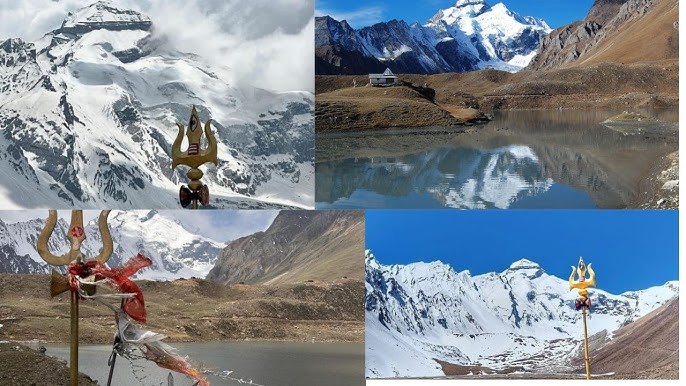
In the sacred land of the Himalayas lies Adi Kailash, also known as Chota Kailash, Om Parvat, or Little Kailash, a revered pilgrimage site closely associated with Lord Shiva. Though Om Parvat is less known than the grand Mount Kailash, Adi Kailash holds immense spiritual significance. This pilgrimage site in Uttarakhand offers devotees an extraordinary opportunity to experience divinity in one of the most remote and serene corners of the world, ancient India. For those unable to undertake the challenging Kailash Mansarovar Yatra, the Adi Kailash Yatra is an alternative, allowing pilgrims to bask in the spiritual energy that emanates from this region.
In this guide, we will embark on a journey through the Adi Kailash Yatra, covering everything from its geographical importance to its spiritual and mythological significance, as well as practical details of the trek itself.
Location & Spiritual Importance of Adi Kailash (Om Parvat)
Geographical Location
Om Parvat is situated in the Pithoragarh district of Uttarakhand, India, close to the Indo-Tibetan border. Nestled at an altitude of 5,945 meters (19,505 feet), the mountain is surrounded by breathtaking landscapes of snow-clad peaks, verdant valleys, and serene lakes. Reaching this sacred site requires permits from the government due to its proximity to the border. Though remote, this pilgrimage site is a spiritual haven, attracting devotees who seek divine blessings and a deeper connection to nature.
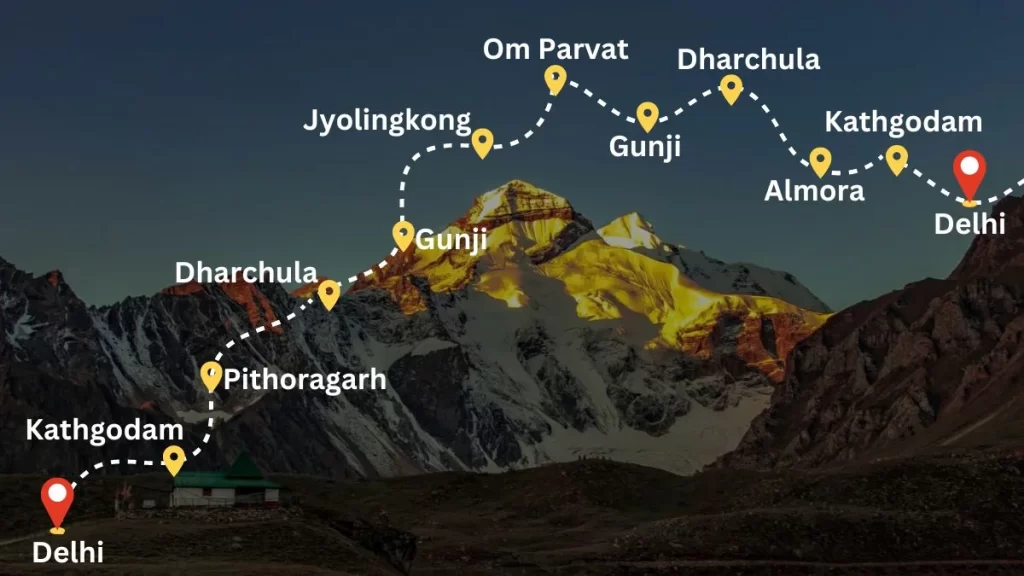
Spiritual Significance of Om Parvat
Known as Baba Kailash or Shiva Kailash, Adi Kailash is regarded as the abode of Lord Shiva. Hindu scriptures often speak of Lord Shiva’s connection with mountains, and this sacred peak is no exception. It forms part of the Panch Kailash—a group of five holy mountains revered in Hinduism, the others being Mount Kailash, Shikhar Kailash, Kinner Kailash, and Manimahesh Kailash.
Adi Kailash is unique in its appearance, with three distinct horizontal lines of snow running across the mountain’s face. These are believed to represent the tilak (forehead mark) worn by Lord Shiva. Pilgrims regard this site as a place of immense spiritual energy, and it is believed that praying here brings blessings of peace, health, and prosperity.
Mythological Legends Surrounding Adi Kailash and Adi Kailash Yatra
Adi Kailash and Adi Kailash Yatra is steeped in mythological stories, many of which trace their roots to the ancient Hindu texts.
Some key legends include:
Lord Shiva and Goddess Parvati
According to Hindu mythology, Om Parvat is considered a sacred place where Lord Shiva and Goddess Parvati reside. Legend has it that the divine couple paused at Adi Kailash on their way to Triyuginarayan, the site of their cosmic wedding. The region is also said to be where Lord Shiva performed penance (तपस्या / tapasya) and meditated, further enhancing its spiritual significance.

The Story of Ravana’s Devotion
Another important story related to Om Parvat involves Ravana, the demon king of Lanka, who was a devout follower of Lord Shiva. It is believed that Ravana came to Adi Kailash to perform austerities and worship Lord Shiva in hopes of gaining supreme power. His intense devotion earned him blessings from the deity, although the tales remind devotees of the balance between devotion and humility.

The Pandavas and their Exile
Several locations around Adi Kailash are believed to have ties to the Pandavas, the protagonists of the Mahabharata. During their exile, the Pandavas are said to have visited this region, and certain landmarks like Pandav Fort and Bheem Ki Kheti (Bheem’s Field) are linked to their presence here. It is believed that Bheem, the strongest Pandava, tilled the land in the vicinity of Adi Kailash during their wanderings.
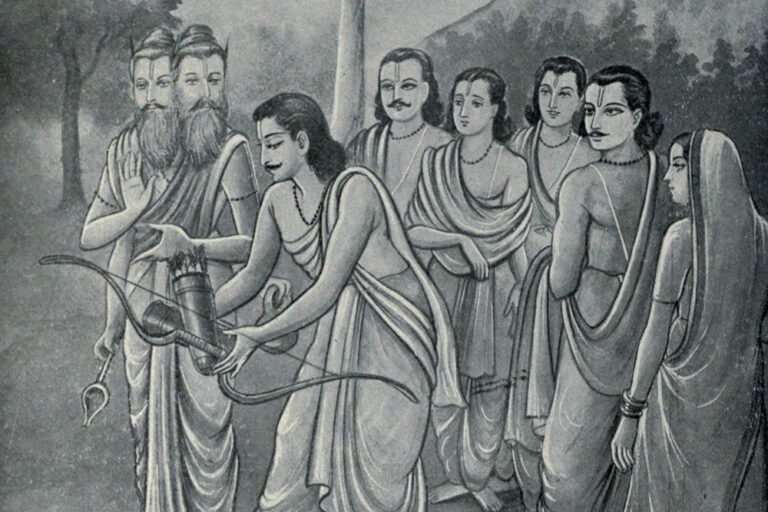
Key Spiritual Sites to Visit in Adi Kailash When On Adi Kailash Yatra
The journey to Om Parvat or Adi Kailash Yatra is not just about reaching the peak but also about visiting several spiritually significant sites along the way.
These FIVE ancient landmarks add to the mystical charm of the pilgrimage:
Om Parvat
One of the most awe-inspiring sights near Adi Kailash is Om Parvat. This mountain bears a natural snow formation in the shape of the sacred Hindu syllable “Om,” which is considered to be the primordial sound of the universe. For many pilgrims, the sight of this formation is a deeply moving experience, reaffirming their faith and devotion.
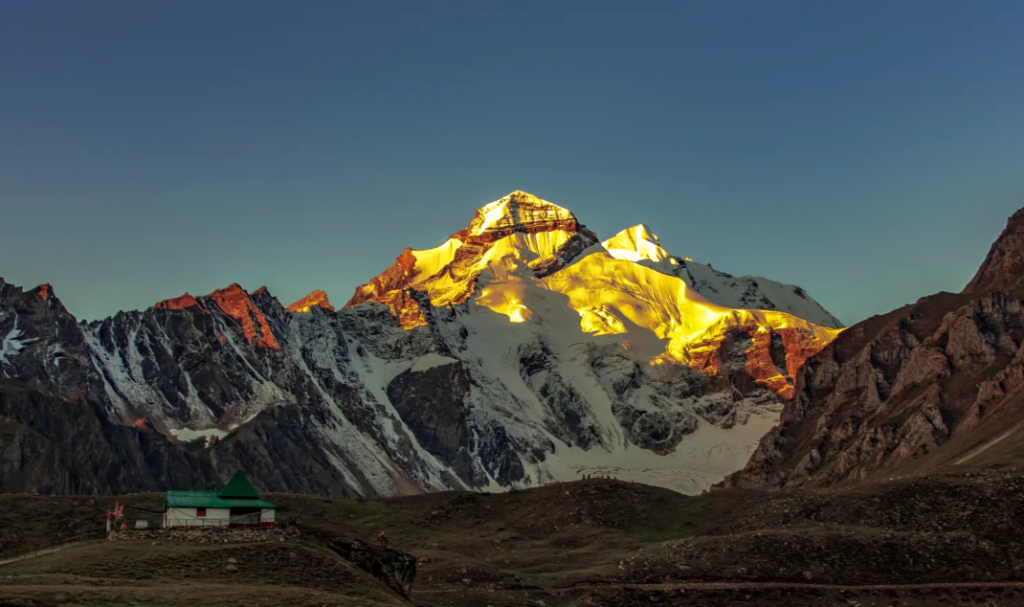
Parvati Tal
Also known as Parvati Kund, this lake is considered sacred to Goddess Parvati, Lord Shiva’s divine consort. The glacial lake sits at the base of the Adi Kailash peak, and its clear waters are believed to have healing and purifying properties. Taking a dip in Parvati Tal is said to wash away sins and grant spiritual purification. The serene beauty of the lake, coupled with its spiritual aura, makes it a must-visit spot during the yatra.
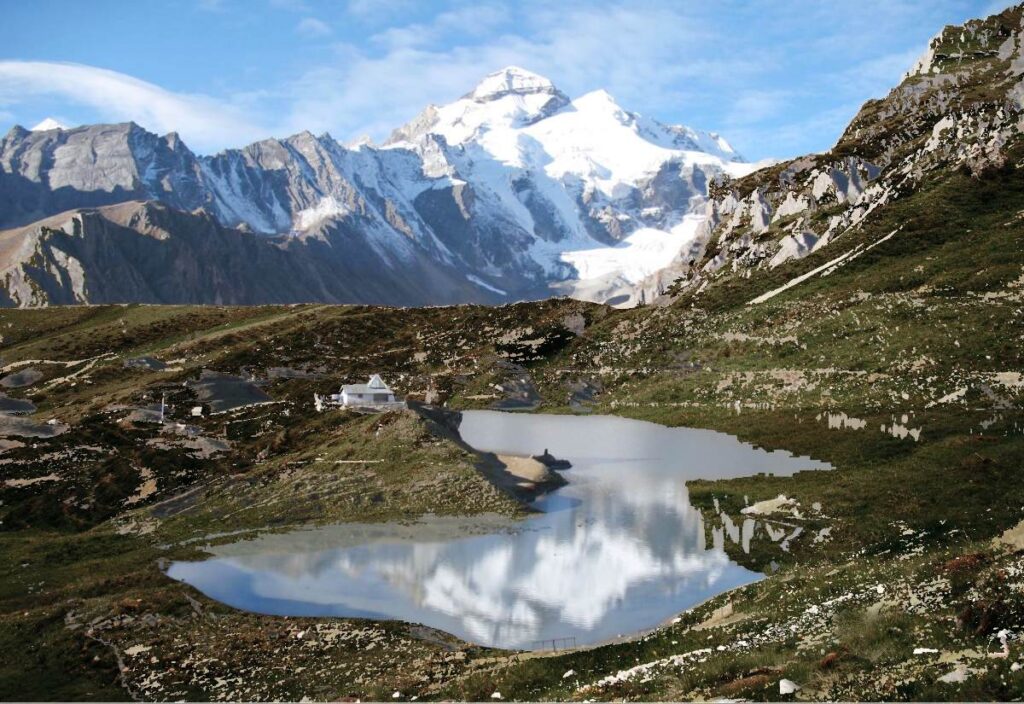
Gauri Kund
Another important site is Gauri Kund, believed to be the spot where Goddess Parvati bathed. Pilgrims often stop here to pay their respects and to take a dip in its holy waters, which are said to have divine blessings for those seeking peace and fertility.
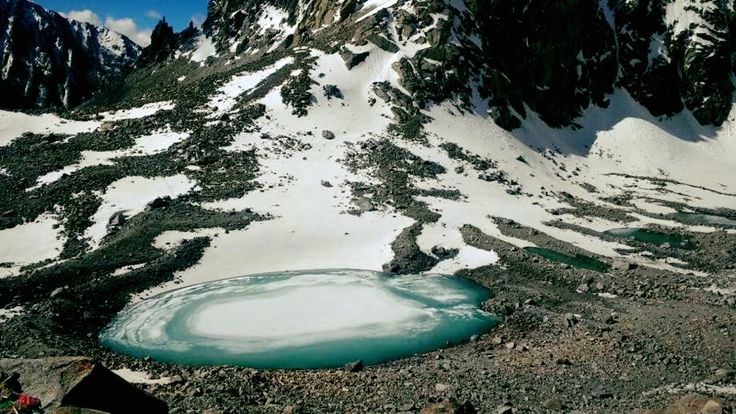
Bheem Ki Kheti at Om Parvat
A field said to have been tilled by Bheem, one of the Pandavas, during their exile. The local lore surrounding this site adds a layer of historical and mythological depth to the pilgrimage. Devotees visiting this place often offer prayers for strength and perseverance, as Bheem was renowned for his immense physical power.

Pandav Fort
Named after the five Pandavas, this fort is believed to have been one of the places where they stayed during their exile. While the ruins of the fort are a silent testament to ancient times, the spiritual energy surrounding it makes it an important stop for pilgrims.

The Journey to Om Parvat: Adi Kailash Yatra Routes and Trek Details
The Adi Kailash Yatra is not just a spiritual journey but also an adventure into the untouched wilderness of the Himalayas. The route involves a combination of travel by road and trekking through some of the most beautiful landscapes in India.
Permits and Formalities for Adi Kailash Yatra
As Adi Kailash is located near the Indo-Tibetan border, pilgrims need to obtain a permit from the authorities at Dharchula, a small town on the banks of the Kali River. This permit is essential to ensure that the journey remains safe and regulated due to its proximity to sensitive border areas.
Here’s How to Get a Permit for Adi Kailash Yatra and Plan Your Journey
Travel Route and Trekking Itinerary for Adi Kailash Yatra
The Adi Kailash Yatra typically begins from Kathgodam, which is the nearest railhead to Pithoragarh. If you’re travelling from Delhi, you can book your tickets first for the route from Delhi to Kathgodam, and from there, you can make your way to Dharchula through winding mountain roads. The next stop is Gunji Village, a remote hamlet that serves as the gateway to Adi Kailash. From Gunji, pilgrims continue towards Jolingkong, which serves as the base camp for the trek.
The trek to Adi Kailash is moderately difficult and is suitable for first-time trekkers, provided they have a good level of physical fitness.
Here’s the YouTube Video to Guide You on Your Way to Mount Kailash
Here’s a day-by-day breakdown of the trek:
Day 1: Kathgodam to Dharchula
A long drive through scenic mountain roads, covering approximately 300 km. Dharchula is the last major town before the remote parts of the yatra begin.
Day 2: Dharchula to Gunji
A drive through the rugged terrain of Tawaghat and Narayan Ashram, finally arriving at Gunji, a serene village at an altitude of 3,200 meters (10,500 feet).
Day 3: Gunji to Jolingkong
A beautiful trek with views of snow-capped mountains leading to Jolingkong, the base for the trek to Adi Kailash.
Day 4: Trek to Adi Kailash Base Camp
Pilgrims will trek from Jolingkong to the Adi Kailash base camp, where they can visit Parvati Tal and offer prayers at the foot of the sacred mountain.
Day 5: Visit Om Parvat
An optional trek to the nearby Om Parvat, where pilgrims can witness the divine “Om” symbol naturally inscribed in snow on the mountain face.
Day 6: Return Journey
Pilgrims make their way back from Gunji to Kathgodam, carrying with them the spiritual experiences of the yatra.
Natural Beauty and the Splendor of the Himalayas (Continued)
The snow-capped peaks surrounding Om Parvat create a breathtaking backdrop for the Adi Kailash Yatra pilgrimage. As you trek through these mountainous regions, the landscape changes dramatically, offering stunning vistas and opportunities for photography and reflection. The interplay of sunlight and shadow on the snow-covered mountains can evoke feelings of peace and wonder, reminding devotees of the divine presence in nature.
Lush Green Valleys at Om Parvat
The valleys surrounding Adi Kailash are rich in biodiversity, teeming with unique flora and fauna. Bright wildflowers bloom in the warmer months, creating a colourful tapestry against the rugged terrain. Pilgrims often find solace in the tranquil beauty of these valleys, which serve as a reminder of the serenity and peace associated with spiritual pursuits.
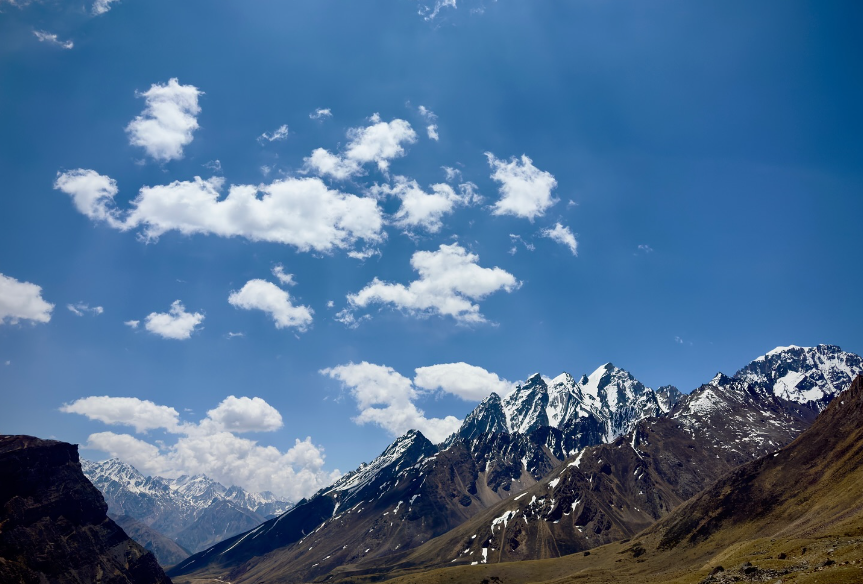
Glacial Lakes
The trek to Om Parvat also includes several glacial lakes, such as
Parvati Tal and Gauri Kund, which add to the area’s allure. The pristine waters of these lakes are believed to have healing properties, and many pilgrims take the opportunity to meditate or pray on their shores, soaking in the natural beauty and tranquillity.

Preparation for the Adi Kailash Yatra
Preparation for the Adi Kailash Yatra pilgrimage is crucial to ensure a safe and enjoyable experience.
Here are some essential tips and considerations for those planning the pilgrimage:
Physical Fitness
Given the altitude and the nature of the trek, it’s essential to be in good physical condition. Regular aerobic exercises, strength training, and stamina-building activities like hiking can help prepare your body for the demands of the yatra.
Pack Smart
Packing wisely is essential for a successful journey. Essential items include:
#1. Clothing: Warm layers are crucial, as temperatures can drop significantly at night. Include thermal wear, waterproof jackets, and sturdy trekking boots.
#2. Sleeping Gear: A lightweight sleeping bag and sleeping mat will ensure comfort during the trek.
#3. Food and Water: Carry energy-boosting snacks, such as nuts and energy bars, along with a refillable water bottle. Staying hydrated is vital, especially at higher altitudes.
#4. First Aid Kit: Basic medications for headaches, altitude sickness, and any personal prescriptions should be included.
#5. Personal Items: Sunscreen, sunglasses, and lip balm are essential due to increased sun exposure at high altitudes.
Some Extras on The Way to Om Parvat
Stay Hydrated and Acclimatize
As the altitude increases, so does the risk of altitude sickness. It’s important to drink plenty of water and allow your body to acclimatise at various points along the trek. Take your time and listen to your body; don’t rush the journey.
Choose the Right Time to Visit Mount Kailash
The best time to undertake the Adi Kailash Yatra is during the summer months, from May to October when the weather is milder, and the pathways are more accessible. The monsoon season (June to September) can bring heavy rains and landslides, making the trek dangerous.
Enjoy Cultural Interactions Along the Way
The Adi Kailash Yatra is not only a spiritual journey but also an opportunity to interact with local communities. The region is home to several ethnic groups, each with its unique customs and traditions.
Hospitality of the Locals
The locals, primarily of the Bhotia community, are known for their warm hospitality. Pilgrims may have the chance to experience local cuisine, which often includes dishes like Thukpa (noodle soup) and Momos (dumplings). Engaging with local families can offer a deeper understanding of their lifestyles and traditions.
Cultural Festivals
If your journey coincides with local festivals, such as Kailash Yatra or Naga Panchami, you may witness vibrant celebrations filled with music, dance, and rituals. Participating in these events can enrich your spiritual experience and provide insight into the region’s cultural heritage.
Environmental Considerations on Your Journey to Mount Kailash
As with any pilgrimage, it’s important to be mindful of the environment during the Adi Kailash Yatra. The pristine natural surroundings should be treated with respect, and steps should be taken to minimize your ecological footprint.
Leave No Trace
Pilgrims are encouraged to carry back all trash, food wrappers, and waste. Respect the natural beauty of the region by keeping it clean and free from litter.
Sustainable Practices
Whenever possible, opt for local businesses and guides who promote sustainable tourism. This not only supports the local economy but also encourages environmentally friendly practices.
Conclusion: A Journey to Meet the DEVINE and Self-Discovery
The Adi Kailash Yatra is more than just a trek; it is a transformative journey that blends spirituality, adventure, and connection to nature. Pilgrims who embark on this yatra often find themselves in deep contemplation, reflecting on their beliefs and experiences.
Whether you are seeking spiritual solace, wishing to connect with nature, or simply looking for an adventure, the Adi Kailash Yatra offers something unique for every traveller. The awe-inspiring landscapes, rich cultural interactions, and the profound sense of divinity that pervades the region create an unforgettable experience that stays with you long after the journey is over.
As you contemplate the legends of Lord Shiva and the sacredness of Adi Kailash, you may find your own spiritual path illuminated in ways you never imagined. The journey to Adi Kailash may be challenging, but the rewards—both spiritual and personal—are immeasurable.
So, lace up your trekking boots, prepare your heart and mind, and embark on this sacred adventure to one of the holiest places on Earth. The divine energy of Adi Kailash awaits you, ready to bless your Adi Kailash Yatra and enrich your soul.
Book online tickets today at zingbus and let your Adi Kailash Yatra to Mount Kailash begin today!

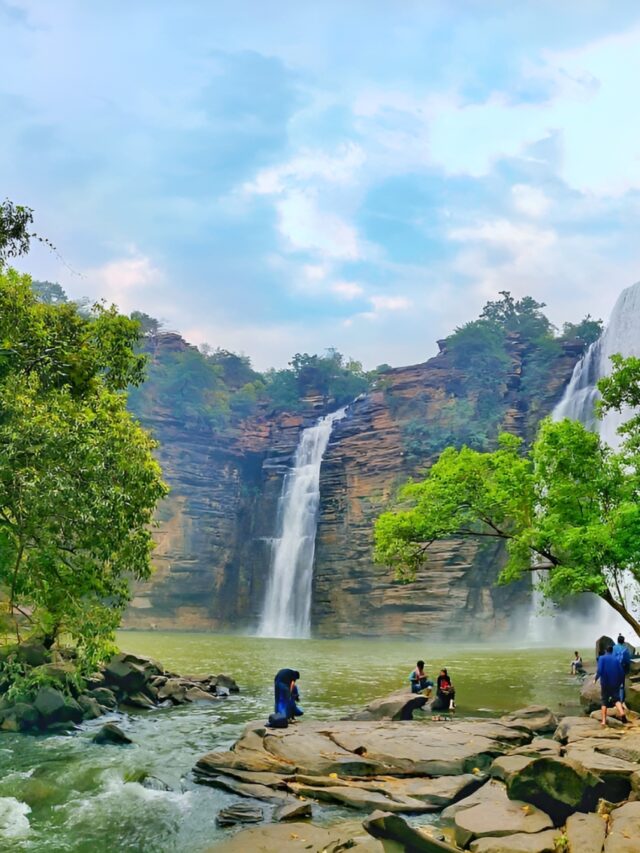

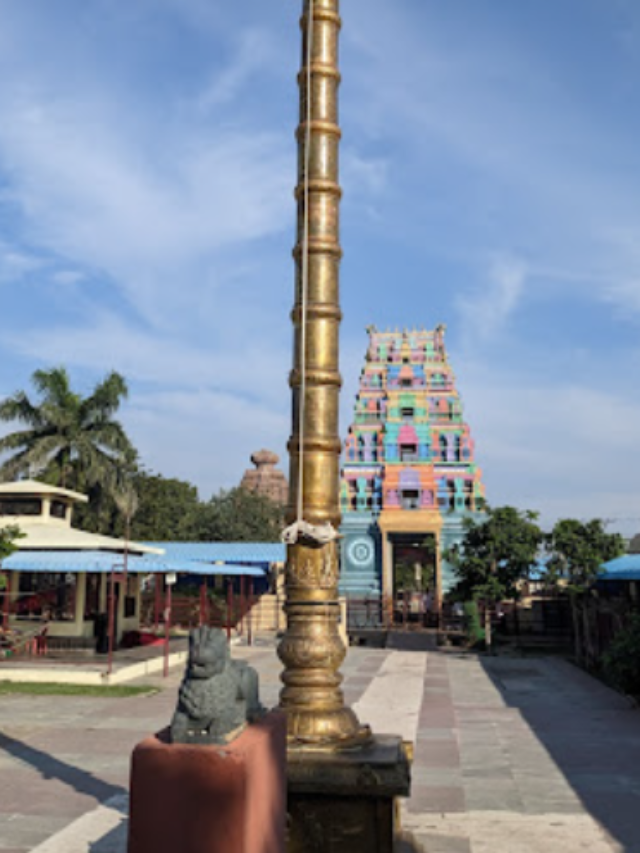
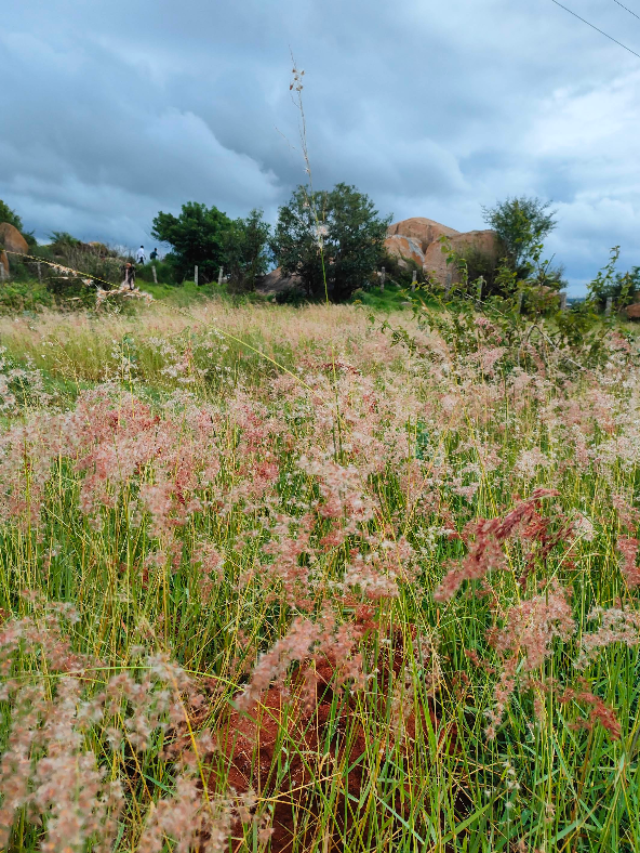
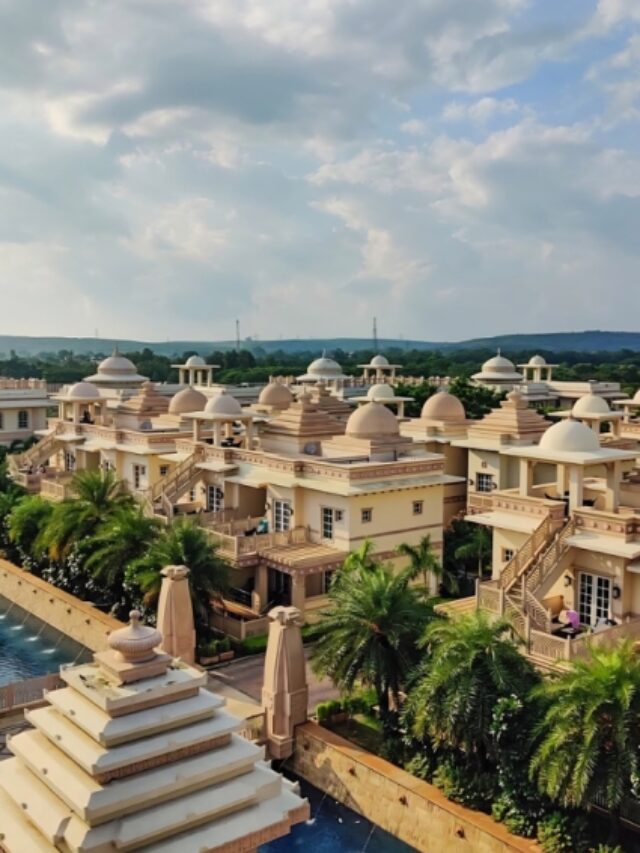
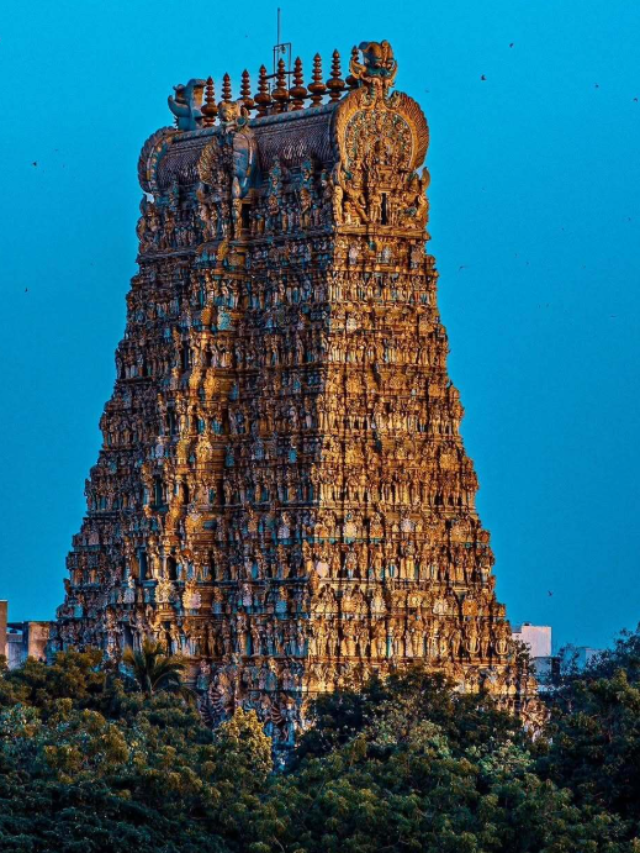

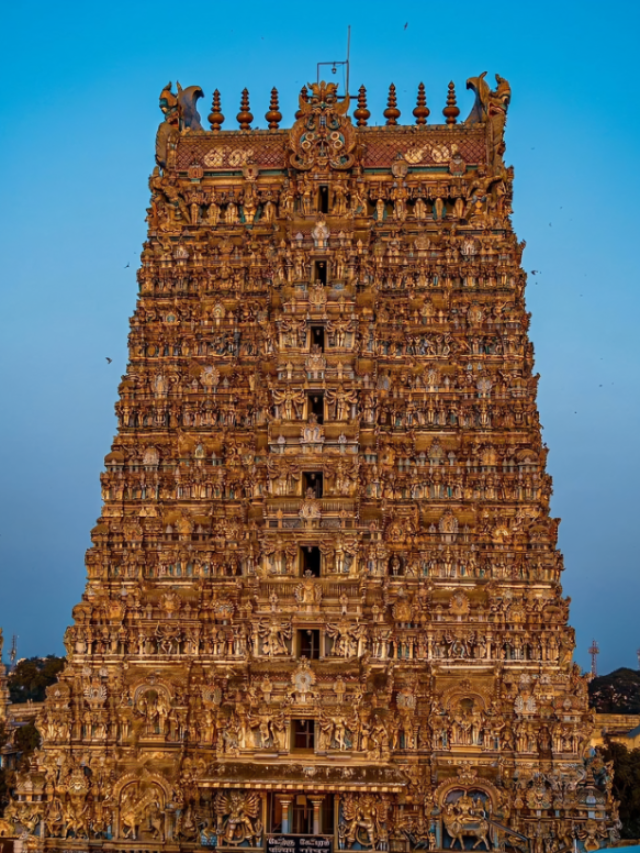

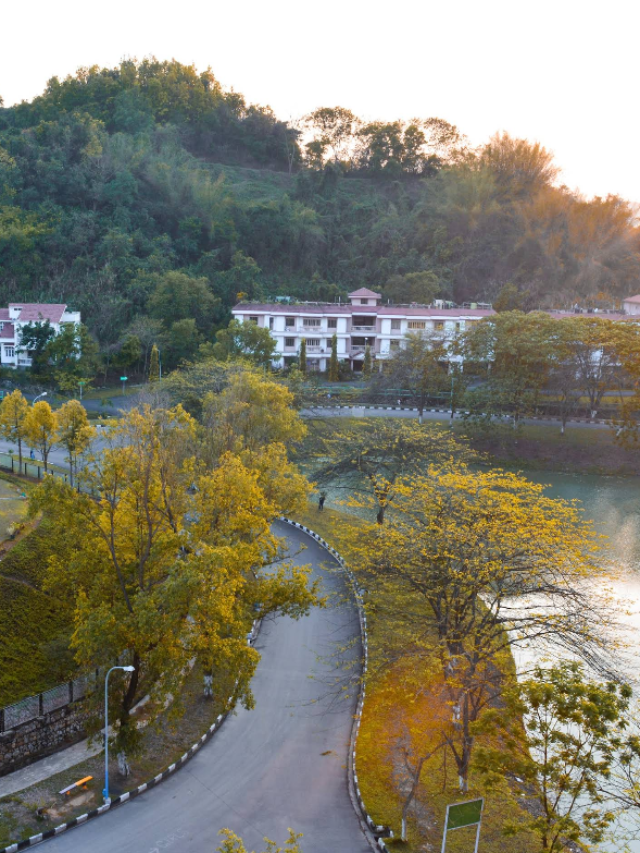






 2025: Visit the Most Photogenic Top 10 Zoos in India this March
2025: Visit the Most Photogenic Top 10 Zoos in India this March 

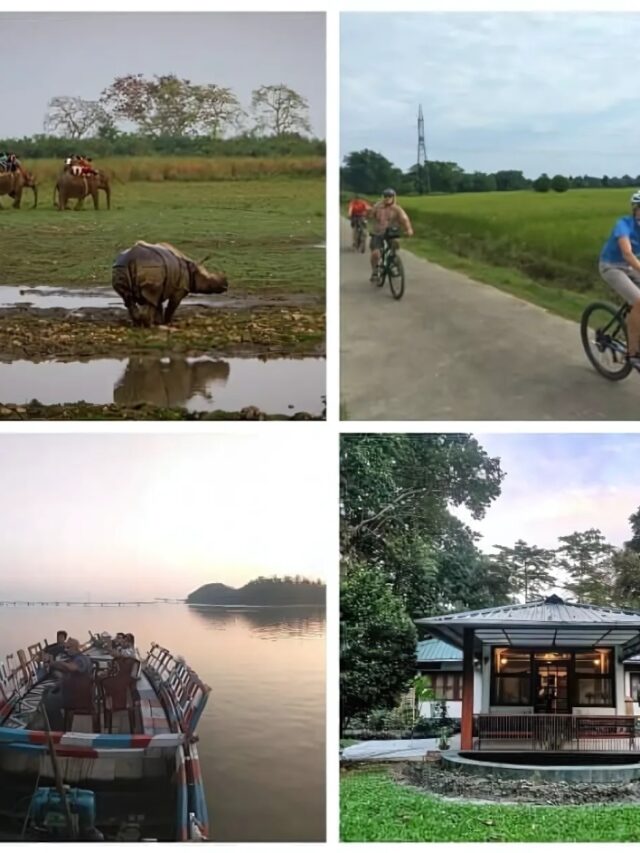


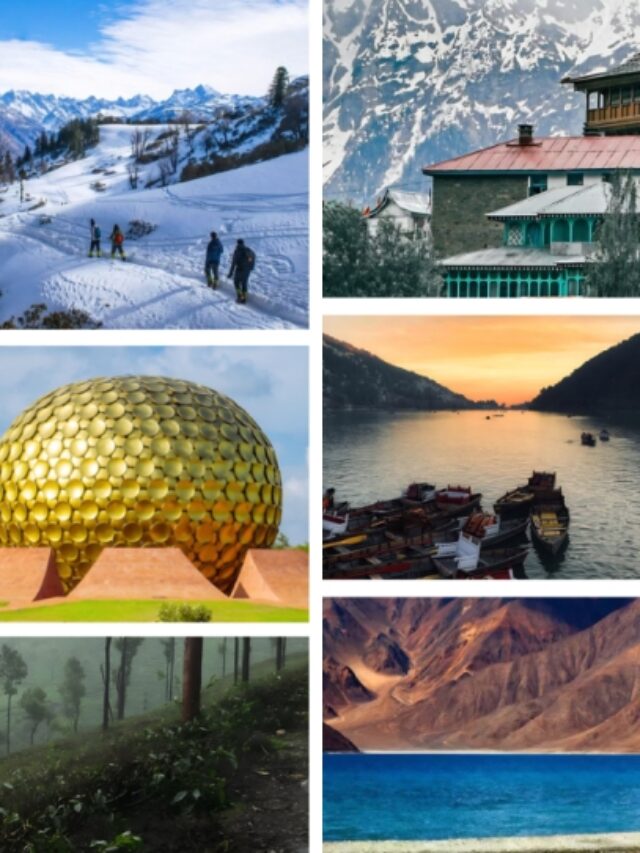

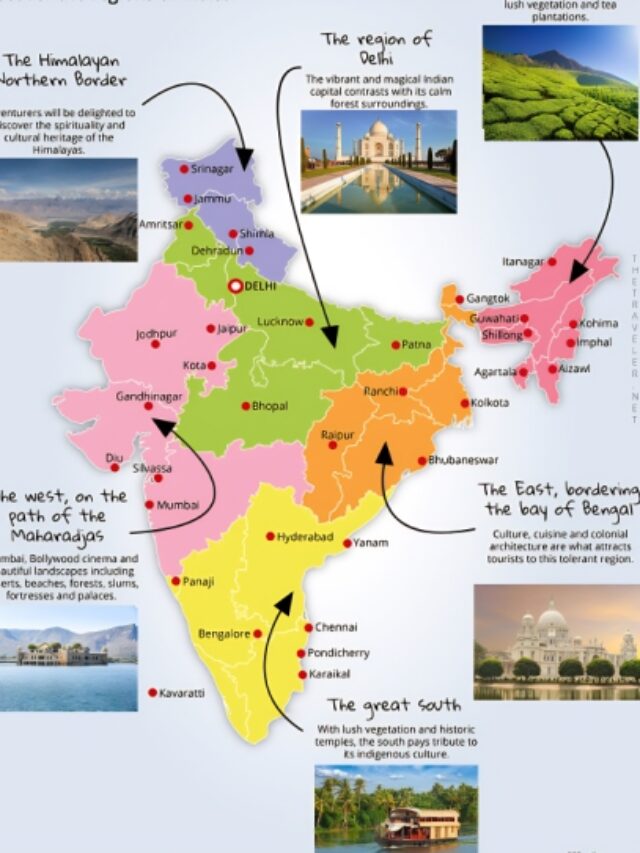


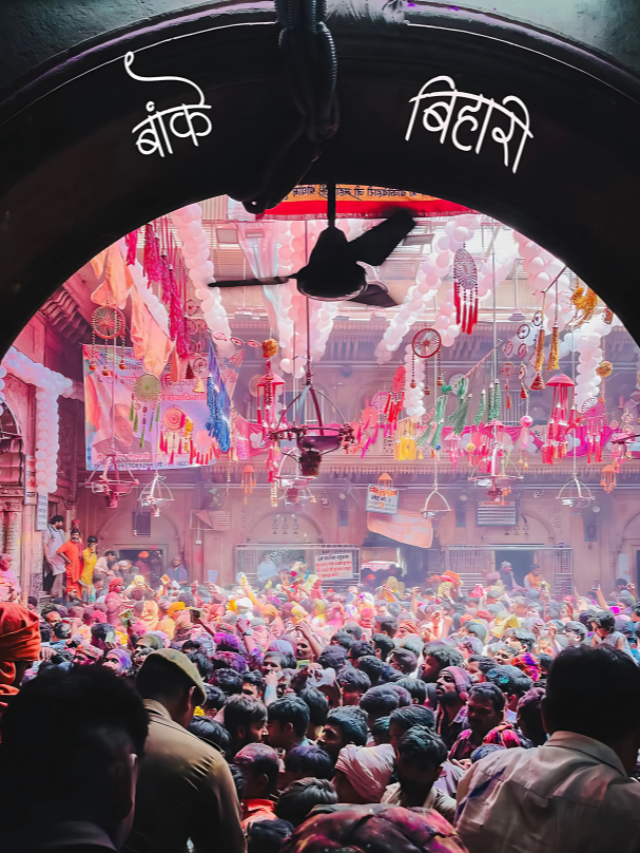





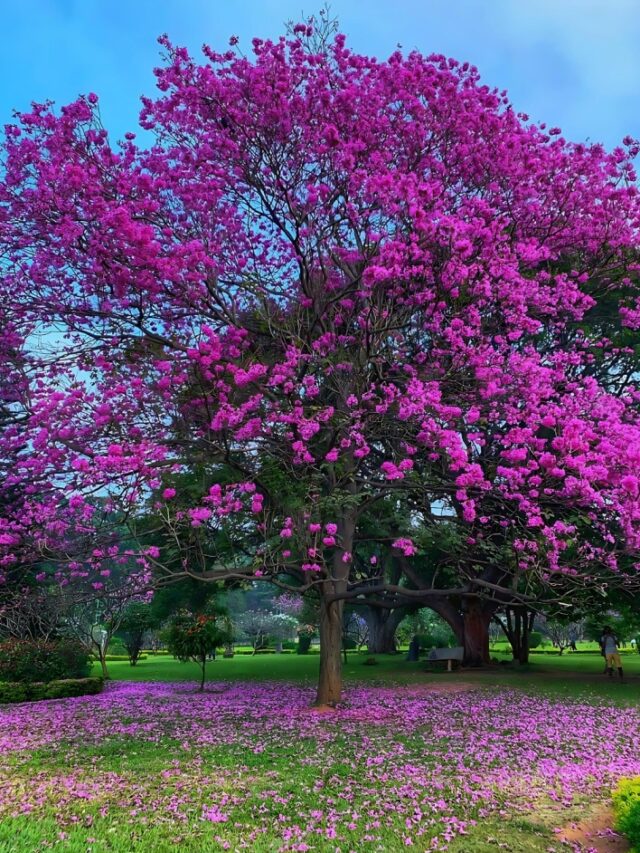
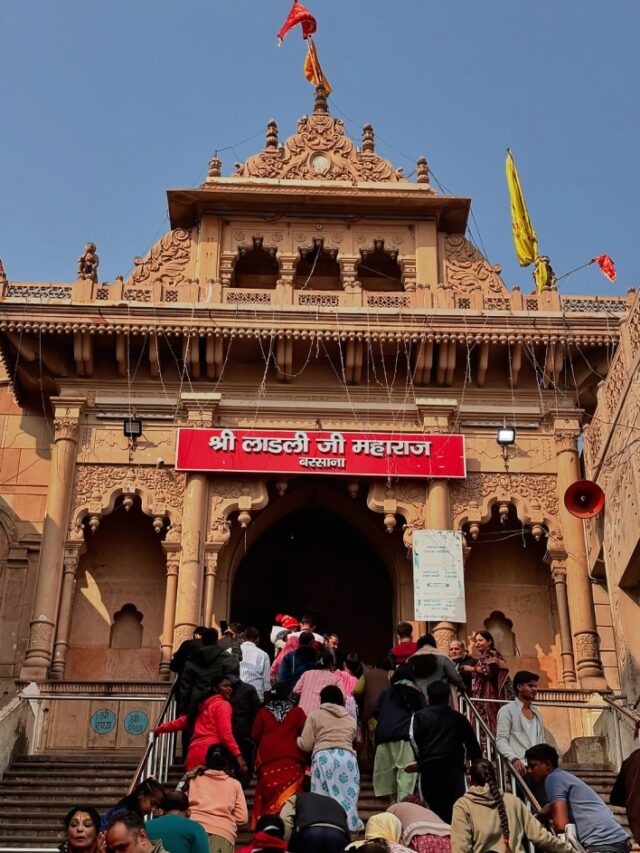







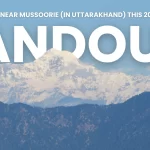


Leave a Reply